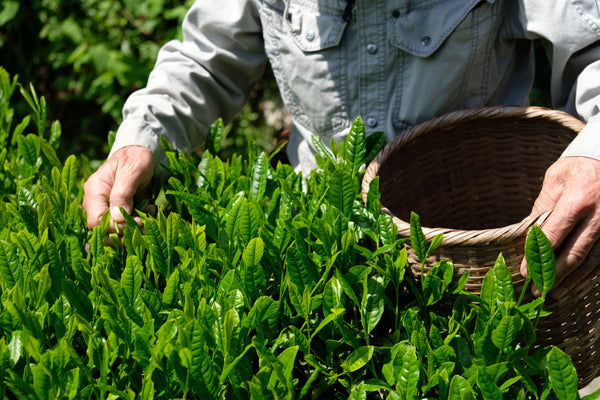In Japan, gyokuro is synonymous with the best tea. It is the tea that is reserved for special occasions or for serving guests. While sencha is enjoyed daily at home or in numerous Japanese eateries, gyokuro is undoubtedly more prized. One thing is true — while almost every single person in Japan has tried sencha (even if just from vending machines), gyokuro is more of a tea for enthusiasts or connoisseurs.

The History of Gyokuro Green Tea
Gyokuro was first discovered in 1853 by Yamamoto Kahei, the XI of the Yamamotoyama Tea Company. While the company was based in Edo (modern-day Tokyo), Yamamoto often traveled to Uji (Japan’s birthplace of tea) to study tea. His trip in 1853 followed an unusually cold winter. He noticed farmers shielded tea bushes from snow using straw mats. The tea leaves harvested that year had a texture and taste like no other. He adopted this shading technique and developed gyokuro, which he originally called Tamano Tsuyu (Jewel of Dew). Eventually, the farming and processing methods of gyokuro were perfected by Tsujiri Emon (the founder of Tsujiri Tea).
Tsujiri Emon played a significant role in the Meiji era, improving the tea trade and making it a national treasure of sorts.
Gyokuro is translated as “jade dew,” and the name is also associated with the highest tea grade in Japan.

Gyokuro Processing
While the processing method is very similar to that of sencha, Japan’s everyday tea, there is one crucial factor that differentiates gyokuro.
20 days before gyokuro is harvested, the tea bushes are shaded from the sun.
While many farms use synthetic sheets to shade the tea bushes, farmers who employ traditional farming methods use special rice straw screens. These screens enrich the final product with unmistakable umami, which comes from the rice scent. This umami lingers on the palate much longer than non-traditional gyokuro. Furthermore, the straw sheets generate less heat. Shielding the tea leaves from the sun and the heat protects them from photosynthesis, resulting in very high amounts of L-theanine in the tea leaves. L-theanine helps some people feel more positive and relaxed.
Shielding the tea bushes from sunlight forces them to quickly send all sugars to the new tea shoots. This creates a sweet and rich final product, void of unwanted bitterness.
More straw sheets are gradually added over the 20 days until finally, the tea bushes are entirely shielded from any sunlight exposure.

When it’s time to harvest, the tea leaves can only be picked by hand. The technique for picking the top leaves of gyokuro takes time to learn, and unfortunately, nowadays, it is mostly the older generation who does the farming. Farmers are working hard to pass on the knowledge to younger generations. However, it is a very slow process. The work is demanding, and it requires many hours of bending over and meticulously picking the tiny tea shoots. Traditional gyokuro is becoming increasingly rarer.
The same processing method is used for tencha, the tea used in matcha production.
To learn more about gyokuro (including taste profiles and brewing methods), check out our first blog post on this umami-rich tea — Japan's Exquisite Tea: Gyokuro.